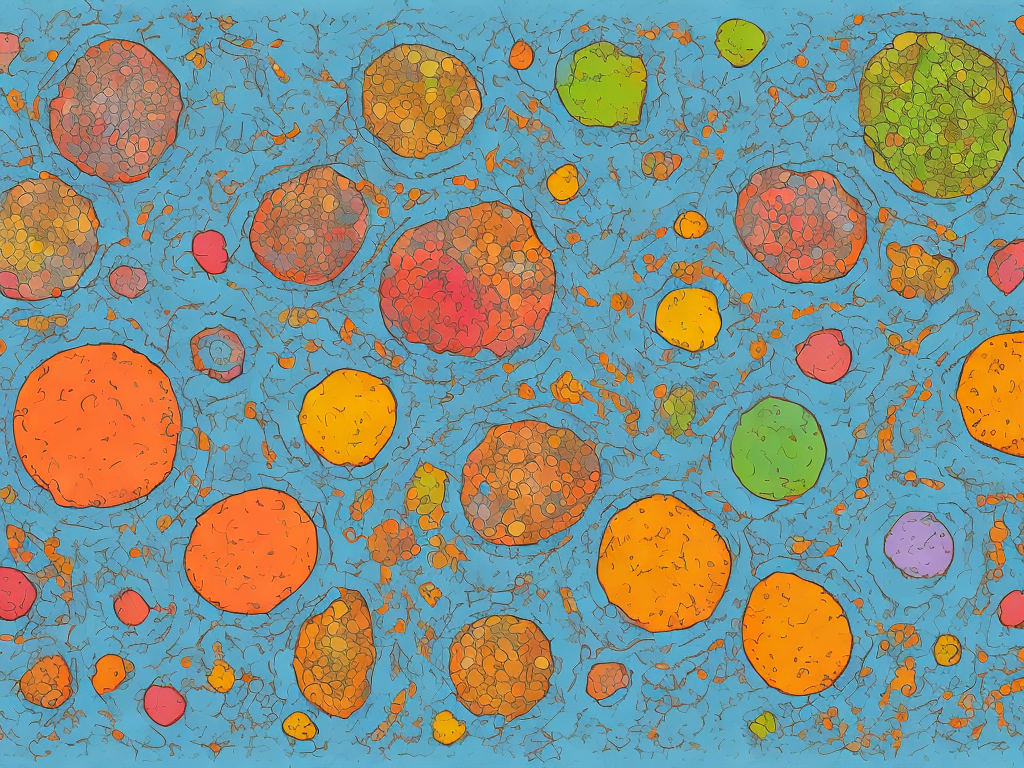
The Difference Between Prokaryotic And Eukaryotic Cells
Cells are the basic structural and functional units of all living organisms. They are vital for carrying out important processes that sustain life. Cells can be divided into two major categories: prokaryotic and eukaryotic cells. Prokaryotic cells are simple and primitive, while eukaryotic cells are complex and advanced. In this article, we will explore the distinguishing characteristics of these two types of cells.
One fundamental difference between prokaryotic and eukaryotic cells lies in their structure. Prokaryotic cells are much smaller and simpler compared to eukaryotic cells. They lack a distinct nucleus and other membrane-bound organelles. The genetic material in prokaryotes is contained in a region called the nucleoid, which is merely a coiled strand of DNA. On the other hand, eukaryotic cells possess a well-defined nucleus, enclosed within a nuclear membrane. This nucleus contains the genetic material in the form of chromosomes, which are organized and separated from the rest of the cell by the nuclear membrane. Furthermore, eukaryotic cells also possess various membrane-bound organelles such as mitochondria, endoplasmic reticulum (ER), Golgi apparatus, and lysosomes, which are essential for carrying out specialized functions.
The presence of a nucleus in eukaryotes allows for greater complexity and organization. This distinct compartmentalization is absent in prokaryotic cells. The nucleus serves as the control center of the cell, housing the DNA and regulating gene expression. It plays a vital role in DNA replication, transcription, and translation. The absence of this vital organelle in prokaryotes limits their ability to regulate gene expression precisely and thus adapt to different environmental conditions.
Another significant difference between prokaryotic and eukaryotic cells involves the cellular machinery responsible for protein synthesis. In eukaryotic cells, protein synthesis occurs in specialized organelles called ribosomes, which are either free-floating in the cytoplasm or associated with the ER. These ribosomes work in conjunction with transfer RNA (tRNA) and messenger RNA (mRNA) to synthesize proteins through a process known as translation. In prokaryotes, protein synthesis also occurs on ribosomes; however, they are smaller in size and structurally different from those found in eukaryotes. Additionally, prokaryotes lack the ER, so all protein synthesis takes place in the cytoplasm.
The energy production process also differs greatly between prokaryotic and eukaryotic cells. Prokaryotes produce energy through a process known as cellular respiration, which takes place in the cytoplasm. They lack mitochondria, the powerhouse of eukaryotic cells, which generate the majority of energy through aerobic respiration. Prokaryotic cells undergo anaerobic respiration or fermentation to produce energy in the absence of oxygen. Eukaryotic cells, on the other hand, have a highly efficient aerobic respiration system, which occurs in the mitochondria and yields a significantly greater amount of energy.
Another remarkable difference between prokaryotic and eukaryotic cells lies in their mode of reproduction. Prokaryotes reproduce through a process called binary fission, which is a form of asexual reproduction. In binary fission, the cell grows, replicates its DNA, and then divides into two identical daughter cells. This process is rapid and contributes to the rapid growth of prokaryotic populations. In contrast, eukaryotic cells reproduce through a process known as the cell cycle, which involves various stages such as interphase, mitosis, and cytokinesis. The cell cycle is highly regulated and complex, allowing for growth, repair, and cell specialization.
Furthermore, the presence of sexual reproduction is another significant difference between prokaryotic and eukaryotic cells. Sexual reproduction, exclusive to eukaryotes, involves the fusion of two specialized cells, known as gametes, to form a genetically diverse offspring. This genetic recombination contributes to increased genetic diversity and adaptation to changing environments. Prokaryotes, being unicellular and lacking reproductive specialization, rely solely on asexual reproduction for survival and propagation.
The last key difference to highlight is the distribution of organisms that possess prokaryotic and eukaryotic cells. Prokaryotes are found in two major domains: Bacteria and Archaea. They are the most abundant and diverse group of organisms on Earth and can adapt to nearly all environments - from hot springs to the deep ocean. Eukaryotes, on the other hand, are found only in the domain Eukarya, which includes animals, plants, fungi, and protists. Their structural complexity and the presence of specialized organelles allow eukaryotes to carry out a wide range of functions and occupy diverse ecological niches.
In conclusion, the difference between prokaryotic and eukaryotic cells is primarily based on their structure, organization, genetic material, protein synthesis machinery, energy production, mode of reproduction, and distribution. Prokaryotic cells are simpler, lack a nucleus, possess a coiled strand of DNA, and lack membrane-bound organelles. Eukaryotic cells, on the other hand, are larger, contain a distinct nucleus, have organized chromosomes, possess membrane-bound organelles including mitochondria, ER, Golgi apparatus, and lysosomes, and undergo aerobic respiration. The presence of a nucleus, membrane-bound organelles, and a complex mode of reproduction are key factors that contribute to the higher complexity and diversity seen in eukaryotic organisms. Understanding these differences is crucial in comprehending the fundamental processes of life and the diversity of organisms that inhabit our planet.
 Self-Instruct
Self-Instruct